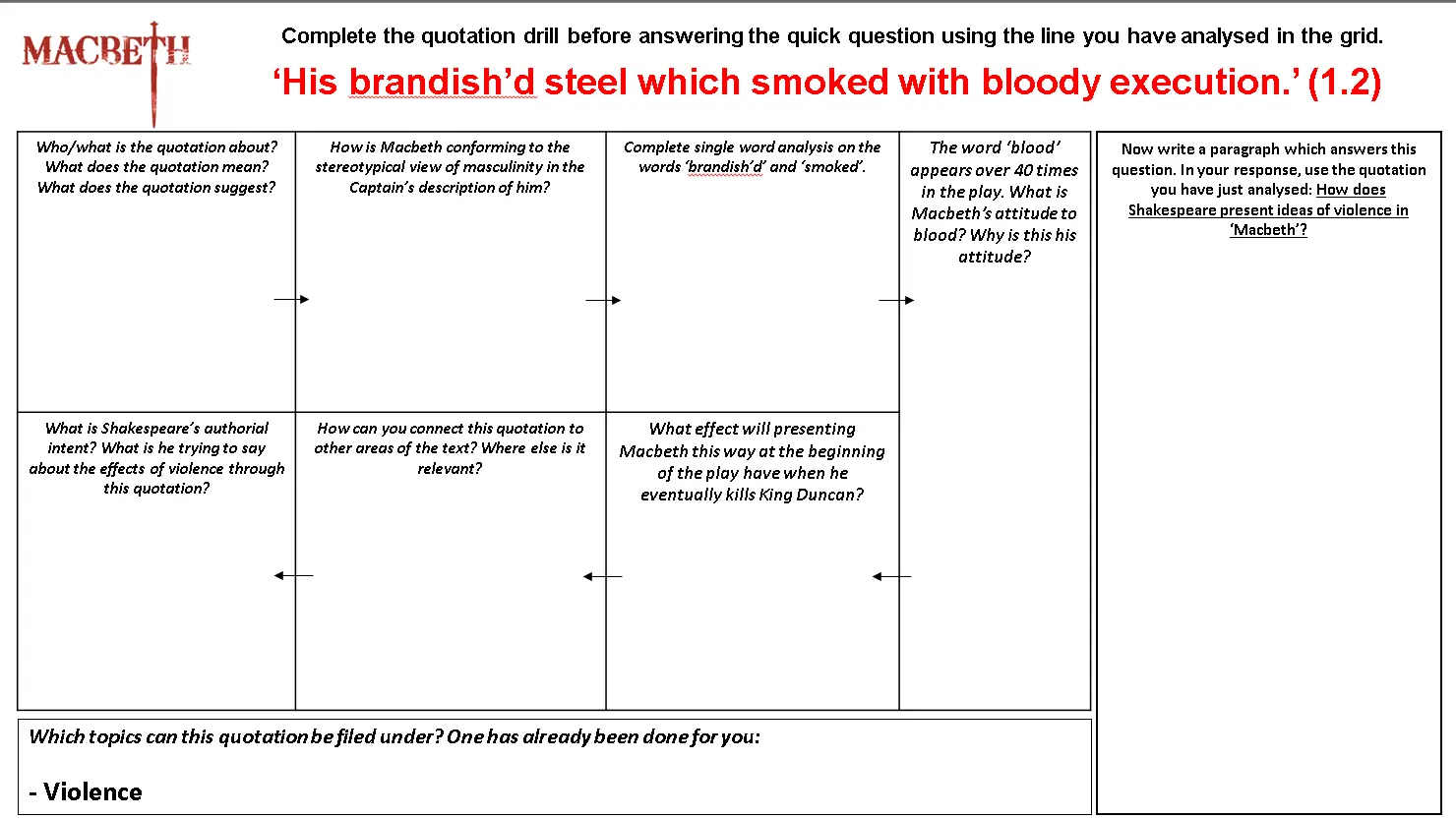In Shakespeare's play Macbeth, the theme of guilt and its consequences is explored through the use of blood imagery. The characters of Macbeth and Lady Macbeth both become consumed by guilt, leading to their descent into madness. This article will analyze the significance of the lines what does macbeth mean by bloody business and what is the analysis of brandished steel in macbeth in relation to the theme of guilt and the use of blood imagery in the play.
Macbeth's Fear and Guilt
In Act III, Scene IV, Macbeth expresses his fear and guilt by stating, i am in blood / stepp'd in so far that, should i wade no more, / returning were as tedious as go o'er (iv. 136-140). This quote suggests that Macbeth is aware of the crimes he has committed and is afraid that he will be punished for them. He feels trapped in a cycle of violence and is unable to escape the consequences of his actions. The use of the metaphor of being in blood emphasizes the extent of Macbeth's guilt and the depth of his involvement in his crimes.
Macbeth's fear and guilt drive him to make poor decisions in order to protect himself. He becomes increasingly paranoid and resorts to further acts of violence to secure his position. The motif of blood is used to highlight Macbeth's deteriorating mental state and his descent into madness. The constant presence of blood in the play serves as a reminder of the guilt that Macbeth carries with him.
Lady Macbeth's Guilt and Madness
Lady Macbeth, too, is plagued by guilt and eventually descends into madness. Although she did not physically commit the murders, she played a significant role in planning them. The guilt of her actions weighs heavily on her conscience, leading to her mental breakdown.
At one point in the play, Lady Macbeth begins to have hallucinations and sleepwalks. During her sleepwalking episode, she obsessively tries to remove the imaginary bloodstains from her hands. This scene showcases the extent of Lady Macbeth's guilt and the toll it has taken on her sanity. The use of blood imagery in this scene emphasizes the psychological impact of guilt and the inability to escape its consequences.

Analysis of Brandished Steel
The phrase brandished steel appears in Act I, Scene II of Macbeth. It refers to Macbeth's sword, which he uses to kill the traitorous Macdonwald. The analysis of brandished steel in Macbeth highlights the theme of violence and the destructive power it holds.
In this scene, Macbeth's use of his sword is seen as a necessary act to protect his country and the king. However, as the play progresses, Macbeth's use of violence becomes increasingly excessive and driven by his own ambition. The brandished steel symbolizes Macbeth's descent into tyranny and his willingness to do whatever it takes to maintain his power.

Overall, the analysis of brandished steel and the motif of blood in Macbeth serve to illustrate the destructive consequences of guilt and unchecked ambition. Both Macbeth and Lady Macbeth are driven to madness by their guilt, and the use of blood imagery throughout the play emphasizes the psychological toll of their actions. As the characters become more entangled in their crimes, they are unable to escape the guilt that haunts them, leading to their tragic downfall.
- Q: What is the significance of blood imagery in Macbeth?
- Q: How does Lady Macbeth's guilt manifest in the play?
- Q: What does the analysis of brandished steel symbolize in Macbeth?
A: The use of blood imagery in Macbeth highlights the theme of guilt and the destructive consequences of unchecked ambition. It serves as a constant reminder of the characters' crimes and the psychological toll they take.
A: Lady Macbeth's guilt manifests through hallucinations, sleepwalking, and an obsessive desire to remove imaginary bloodstains from her hands. These actions showcase the psychological impact of guilt and its ability to drive a person to madness.
A: The analysis of brandished steel symbolizes Macbeth's descent into tyranny and his willingness to use violence to maintain his power. It highlights the destructive consequences of unchecked ambition.
The theme of guilt and its consequences are central to Shakespeare's Macbeth. The characters of Macbeth and Lady Macbeth both become consumed by guilt, leading to their descent into madness. The use of blood imagery throughout the play serves to emphasize the psychological toll of their actions and the destructive consequences of unchecked ambition. Macbeth's fear and guilt drive him to make poor decisions, while Lady Macbeth's guilt manifests in hallucinations and sleepwalking. The analysis of brandished steel symbolizes Macbeth's descent into tyranny and the destructive power of violence. Ultimately, the play serves as a cautionary tale about the consequences of succumbing to guilt and ambition.
If you want to know other articles similar to The significance of blood imagery in macbeth you can visit the Guilt category.

